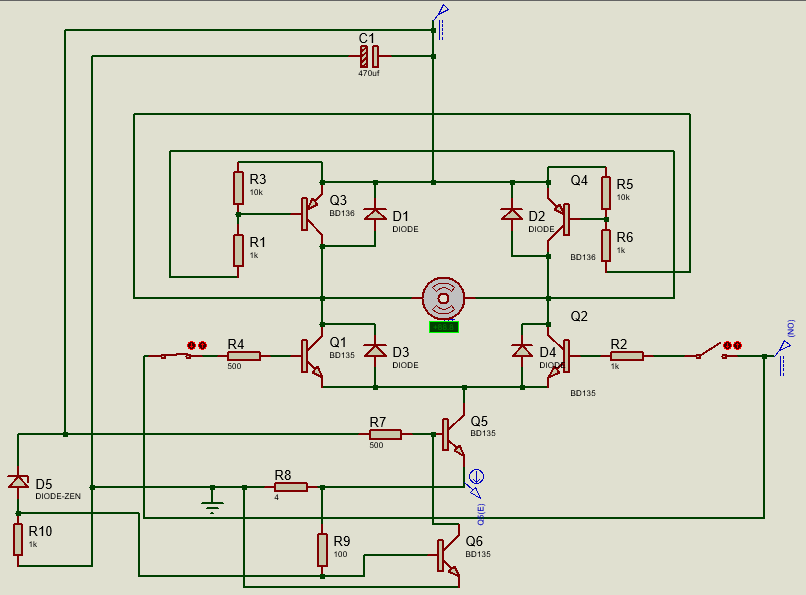I am designing a simple H bridge circuit for use with the Atmega8 microcontroller. The DC motor moves this application a lot and generates 140 mA current spikes (DC motor locked) or 60 mA with normal workload.
The working voltage ranges from 10 to 16 V, I will use the transistors BD441 / BD442 (2 A of DC current at 20 V and 4 A DC at 10 V) were the most robust that will fit in my circuit.
Q1 to Q5 will be BD441 / 442, some questions:
Q5 through R8 (shunt) limits the current (I will leave 200ma peak), it makes sense to use this transistor to limit the inductive current peaks or I could just limit the current through the base of the transistors? What would be the problem of operating the base current transistor to operate in a linear region up to 200 mA?
Q6 will be a small npn, together with a 20 V zener it makes Q5 cut and stops driving in cases of over voltage. I've seen this DC motor being operated by a transistor with 45 Vce without fail, I wanted more robustness in the circuit, does it make sense to use it or not?
Use small resistors (0R33, 0R66 etc.) in the DC motor terminals help protect the circuit against very short surge currents that the oscilloscope cannot see or does my 4 ohm rshunt resistor solve this already?

